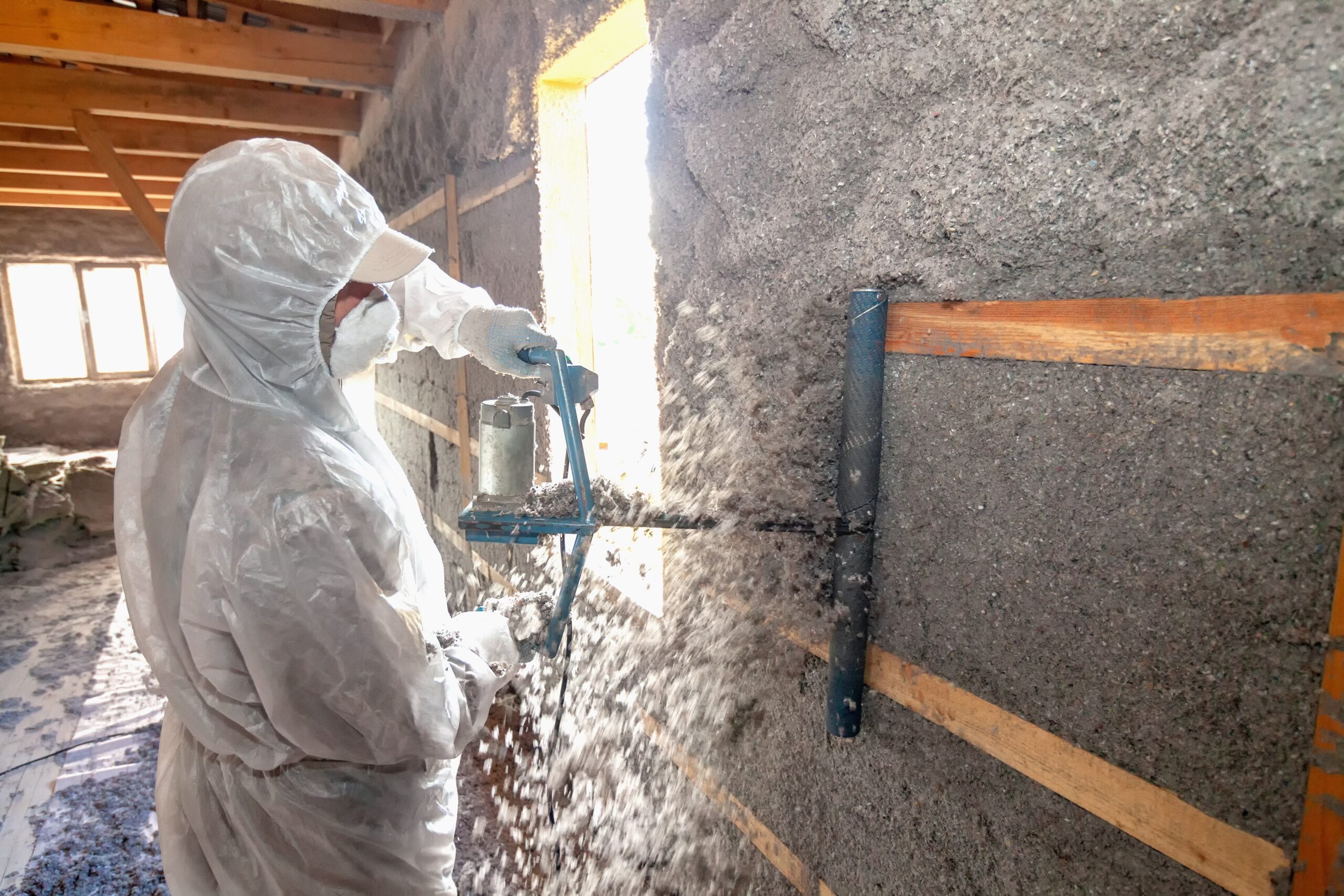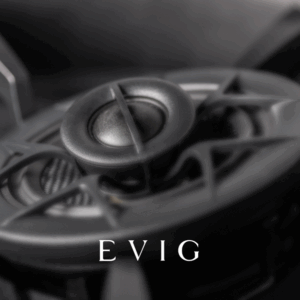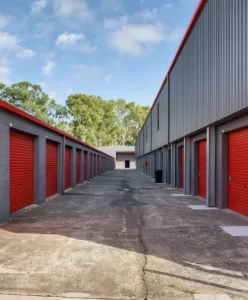
Spray foam insulation reduces HVAC wear in New Lenox, IL, by creating a highly efficient thermal barrier that minimizes the workload on heating and cooling systems. This insulation method seals air leaks, stabilizes indoor temperatures, and significantly reduces the frequency and intensity of HVAC cycling. In a region like New Lenox—characterized by cold winters and humid summers—spray foam insulation offers year-round performance benefits, directly translating into extended HVAC equipment lifespan and lower maintenance costs.
Spray foam’s closed-cell structure prevents conditioned air from escaping and blocks unconditioned air from infiltrating. This thermal resistance limits the load on HVAC units, which no longer need to compensate for temperature fluctuations caused by poor insulation. South Chicago Insulation has observed firsthand how properties retrofitted with spray foam experience fewer HVAC repairs, better indoor comfort, and measurable energy savings. This article delivers in-depth insights based on practical field experience and technical evaluation.
How Spray Foam Reduces HVAC Wear
Thermal Sealing and Air Infiltration Control
Spray foam insulation eliminates uncontrolled air movement through walls, attics, and crawlspaces. This feature directly benefits HVAC systems:
- Less Air Exchange: Fewer temperature disruptions mean HVAC systems maintain desired settings with less effort.
- Steady Indoor Climate: Consistent thermal control reduces system starts and stops, prolonging motor and compressor life.
Bonus Tip: In homes with noticeable temperature swings between floors, targeting spray foam in attic and rim joists yields the quickest HVAC load relief.
Moisture Barrier and Condensation Control
Humidity infiltration stresses air conditioning systems. Closed-cell spray foam serves as a moisture barrier, reducing latent load and enhancing dehumidification efficiency.
| Feature | Spray Foam Impact | HVAC Wear Reduction |
| Vapor Resistance | High (closed-cell) | Prevents humidity-induced overload |
| Thermal Drift | Low | Stable insulation value over time |
| Air Seal Capability | Excellent | Reduces system cycling |
| Feature | Spray Foam Impact | HVAC Wear Reduction |
System Runtime Optimization
Less temperature fluctuation equals fewer HVAC runtime events.
Bonus Tip: Programmable thermostats paired with spray foam retrofits can reduce annual HVAC runtime by up to 30%, based on South Chicago Insulation’s monitored case studies in Will County homes.
Technical Performance in New Lenox Climate
Spray foam performance aligns tightly with New Lenox’s mixed-humid climate. Here, both heating and cooling demands peak seasonally, placing strain on equipment. Insulation failures lead to overuse and premature system breakdowns.
| Specification | Closed-Cell Spray Foam | Open-Cell Spray Foam |
| R-Value (per inch) | R-6.5 – R-7.0 | R-3.6 – R-3.9 |
| Air Seal Effectiveness | High | Moderate |
| Vapor Retarder | Yes | No |
| Ideal Use | Roof decks, exterior walls | Interior partitions, sound control |
Source: Building Science Corporation (2024); DOE Weatherization Guidelines
Regional HVAC Stress Factors and Insulation Benefits
In New Lenox, homes experience ice damming in winter and attic heat buildup in summer. Poorly insulated homes force HVAC systems to operate under high demand in both scenarios.
| Regional Challenge | Impact on HVAC | Spray Foam Solution |
| Ice dam formation | Overheating of attic, re-freezing | Closed-cell insulation on roof deck stops heat escape |
| Summer attic temps >130°F | Overheats ductwork, lowers AC efficiency | Attic encapsulation stabilizes space at <95°F |
Market Fact: According to the Midwest Energy Efficiency Alliance, HVAC systems in homes without attic air sealing in IL can lose 20–30% efficiency during extreme conditions (2023).

Things to Consider Before Making a Decision
Before committing to spray foam insulation for HVAC protection, consider the following:
- Existing Insulation Condition: Evaluate whether full removal or hybrid installation is needed.
- Ventilation Adjustments: Sealed environments may require mechanical ventilation for balanced air exchange.
- Budget vs. Lifecycle Savings: Spray foam costs more upfront but saves HVAC replacement costs long term.
- Application Area Access: Limited crawl or attic access may increase installation complexity.
- Code Compliance: Ensure fire-rated coatings and ventilation strategies align with local codes.
Bonus Tip: In homes built before 1990 in New Lenox, retrofitting rim joists and attic slopes shows the most immediate reduction in HVAC cycling.

Comparison of Insulation Options for HVAC Longevity
| Criteria | Spray Foam | Fiberglass Batts | Cellulose |
| Air Sealing | Excellent | Poor | Moderate |
| R-Value Retention | High (no settling) | Low (compresses) | Medium (settles over time) |
| Moisture Resistance | High (closed-cell) | Low | Medium |
| HVAC Load Reduction | Significant | Minimal | Moderate |
| Initial Cost | High | Low | Medium |
| Lifespan | 30+ years | 10–15 years | 15–20 years |
Source: NAIMA, Building Performance Institute (2023); Field experience from South Chicago Insulation
Common Questions
- Does spray foam reduce the need for HVAC repairs?
Yes. By lowering runtime and minimizing stress, systems last longer and break down less often. - Will this work in both older and newer homes?
Absolutely. Retrofit spray foam in older homes often delivers the most dramatic HVAC relief. - How soon will I notice HVAC improvements?
Most homeowners feel changes within 1–2 HVAC cycles—often the same day of installation. - Is the insulation safe around ducts or electricals?
Yes, when applied by certified installers who manage clearances and coating requirements. - Does spray foam affect HVAC sizing?
Yes. In some cases, systems can be downsized during replacement after insulation upgrades.
Services That Support HVAC Longevity
Residential Insulation
Improves comfort and efficiency in single-family homes through attic, wall, and crawlspace solutions.
Commercial Insulation
Supports building performance and energy compliance for small to mid-size commercial structures.
Retrofit Insulation
Targets existing homes for performance upgrades without major renovations.
Spray Foam Roofing
Creates weather-tight, insulated roofs that reflect heat and reduce interior temperature gain.
Roof Coatings
Protect roof membranes while enhancing reflective value to reduce HVAC strain.
Attic Insulation
Prevents heat transfer from living areas to attics—critical in reducing HVAC cycling.
Crawlspace Encapsulation
Eliminates moisture and temperature issues below grade, stabilizing floor-level comfort.
Home Performance Evaluation
Assesses insulation, HVAC efficiency, and air leakage to identify targeted improvement zones.
Sound Attenuation Insulation
Reduces indoor noise transfer while adding thermal buffering.
Pole Barn Insulation
Controls interior barn climates for better equipment protection and reduced HVAC use.
Intumescent Coatings
Adds fire-resistance ratings to spray foam in exposed areas per code requirements.
Blown-In Insulation
A cost-effective solution for topping off attics or dense-packing walls.
FAQ
How often should HVAC systems be inspected after spray foam installation?
Inspect once after 6 months, then resume standard annual maintenance. Reduced load doesn’t eliminate upkeep.
Can spray foam cause HVAC systems to be oversized?
Yes, especially if previously sized to compensate for poor insulation. Consider downsizing during next system upgrade.
Will I need to upgrade ventilation systems post-insulation?
Possibly. A tighter home may require controlled fresh air solutions like ERVs.
How does spray foam interact with ductwork?
Encapsulating ducts in spray foam reduces thermal losses and boosts HVAC delivery efficiency.
What if my home already has fiberglass insulation?
Hybrid solutions are common. Spray foam can be added selectively to improve thermal performance.
Ready to Achieve Longer HVAC Lifespan and Lower Costs?
Apply these insights now: Schedule your home performance consultation with South Chicago Insulation. Discover how targeted insulation upgrades can protect your HVAC system and increase comfort year-round.
Contact South Chicago Insulation
📞 (779) 803-8025
📧 [email protected]
Author and Reviewer:
Author: Bob Gasca attended his first spray foam training in 2007 and has continued to pursue yearly trainings to stay current with the latest technology and practices. He is a certified Spray Foam Master Installer through the SPFA and a member of the SPFA. Additionally, Bob serves as a Spray Foam Worldwide Ambassador, sharing information with spray foam professionals globally. Recently, he returned from a building science training, where he expanded his knowledge on how weather conditions affect home performance, helping him better diagnose and improve home health for families. Bob specializes in finding solutions to complex moisture and air infiltration issues.
Reviewer: Noah Gonzalez reviewed this article and drew on 9 years of experience to offer suggestions that make the guidance more directly useful for insulation contractors.





